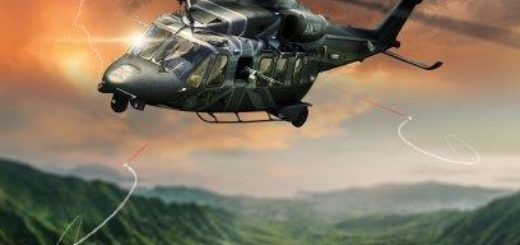Development of the 5th generation fighter brings the reign of the F-35 Lightning II to an end

{loadposition bannertop}
{loadposition sidebarpub}
The United States became the first country in the world to develop a fifth-generation fighter jet when the F-22 Raptor entered service in 2005 (excluding the F-117 Nighthawk). Today, several countries are developing fifth-generation fighter jets or what they claim to be fifth-generation fighter jets. Although there is no precise definition of what constitutes a fifth-generation fighter jet, many countries are building aircraft with fifth-generation characteristics (such as being low observable). Let’s review the current developments.Follow Army Recognition on Google News at this link
SU-57 as 4,5 Gen fighter (Picture source: Ai-generated Picture/Army Recognition)
China – Shenyang FC-31
The Shenyang FC-31, which first flew in 2012, is likely to be the next fifth-generation fighter to enter service (after the F-22, F-35, J-20, and Su-57). Currently, the jet exists as a prototype, and little is known about it. It also appears that the FC-31 is being developed with a naval variant to operate from China’s growing fleet of aircraft carriers (notably the Type 003 Fujian, which is currently undergoing sea trials). The FC-31 could also become the second fifth-generation fighter to be exported (after the F-35), as Pakistan is reportedly interested in purchasing it. While the aircraft may initially use Russian-made engines, the Chinese hope to eventually equip it with domestic Guizhou WS-19 engines.
Chine FC-31 flying in 2023 (Picture source: Chinese PLA )
South Korea – KF-21 Boramae
The Boramae is a South Korean 4.5th-generation fighter jet that could compete with other aircraft like the French Rafale in the international market. The KF-21 Boramae had its first flight in 2022, partly due to its rapid development and planned high-volume production. The aircraft is designed and produced by South Koreans in partnership with Indonesians. The program aims for quick production with a modular design, meaning the jet will initially be a 4.5th-generation fighter with many foreign components. South Korea hopes to gradually indigenize production and evolve the platform into a true fifth-generation fighter by internally storing weapons and making other modifications later. The first test flight of the KF-21 occurred in 2022, with production expected to start in 2026, and South Korea plans to acquire 120 units by 2032.
South korean KF-21 demonstrator (Picture source: South Korean MoD)
Russia – Sukhoi Su-75 Checkmate
Among all the aircraft on this list, the Su-75 is arguably the least likely to materialize. Russian marketing has tried to generate export enthusiasm for the Su-75 with great fanfare. However, the jet probably only exists as a concept, with only a mock-up displayed. As Russian combat aircraft exports have plummeted in recent years, it seems unlikely that Russia will secure the foreign orders and investments needed to develop this aircraft. The Su-75 appears to be aimed at exports, and it is questionable at best whether the Russian Air Force will invest in the project. The Russian invasion of Ukraine has further clouded the Su-75’s prospects, making it even less likely that countries will order it and that the Russian military will invest in weapons for today’s war rather than the distant future.
SU-75 checkmate model exposed as 5 Gen fighter dedicated to export (Picture source: ROStec )
Turkey – TAI KAAN
Like South Korea, Turkey is trying to disrupt the 4.5th/5th-generation fighter market by developing its own fighter (with export in mind). The TAI Kaan is a stealth air superiority fighter being built to replace Turkey’s F-16 Fighting Falcons, with its first flight in 2024. The project has gained urgency after the United States excluded Turkey from the F-35 program following its purchase of Russian S-400 air defense systems. The first prototype of the TAI Kaan was unveiled in 2023, and its maiden flight took place in February 2024. Like the Saab Gripen and the Korean Boramae, the Kaan features many components from Western countries. It is being developed in cooperation with British defense giant BAE Systems. The initial engine will be the General Electric F110 until the TAEC engine (a British Rolls-Royce/Turkish KALE engine) becomes available.
Turkish made KAAN, insipred from US F-22 (Picture source: TAI)
India – AMCA
Breaking away from the Russian Su-57 project, India decided to go it alone and develop its own fifth-generation fighter jet. The development of India’s AMCA fifth-generation fighter is expected to accelerate in 2024 after New Delhi approves the design and prototype. Metal cutting for prototypes is set to begin in 2024. The AMCA is a stealthy single-seat multirole aircraft under development for the Indian Air Force and Navy. The project gained importance for India after its withdrawal from the troubled Russian Su-57 fighter program in 2018. India claimed that the Russian fifth-generation fighter did not meet its requirements for stealth, sensors, radar, and combat avionics. According to Janes, the first AMCA prototype is expected to fly in 2028-2029
Indian AMCA-advanced median combat aircraft- presented in jaunaray 2023 (Picture source: X/@NewsIADN)
In conclusion, many countries are at an advanced stage of development, far ahead of the European SCAF project. Although little data is available on these aircraft, they represent serious emerging competitors to the American F-35 and F-22, which are currently benchmarks. Despite the lack of a precise definition of fifth-generation fighters, it is noted that a common feature is stealth, achieved through steep angles and linear structures.

{loadposition bannertop}
{loadposition sidebarpub}
The United States became the first country in the world to develop a fifth-generation fighter jet when the F-22 Raptor entered service in 2005 (excluding the F-117 Nighthawk). Today, several countries are developing fifth-generation fighter jets or what they claim to be fifth-generation fighter jets. Although there is no precise definition of what constitutes a fifth-generation fighter jet, many countries are building aircraft with fifth-generation characteristics (such as being low observable). Let’s review the current developments.
Follow Army Recognition on Google News at this link
SU-57 as 4,5 Gen fighter (Picture source: Ai-generated Picture/Army Recognition)
China – Shenyang FC-31
The Shenyang FC-31, which first flew in 2012, is likely to be the next fifth-generation fighter to enter service (after the F-22, F-35, J-20, and Su-57). Currently, the jet exists as a prototype, and little is known about it. It also appears that the FC-31 is being developed with a naval variant to operate from China’s growing fleet of aircraft carriers (notably the Type 003 Fujian, which is currently undergoing sea trials). The FC-31 could also become the second fifth-generation fighter to be exported (after the F-35), as Pakistan is reportedly interested in purchasing it. While the aircraft may initially use Russian-made engines, the Chinese hope to eventually equip it with domestic Guizhou WS-19 engines.
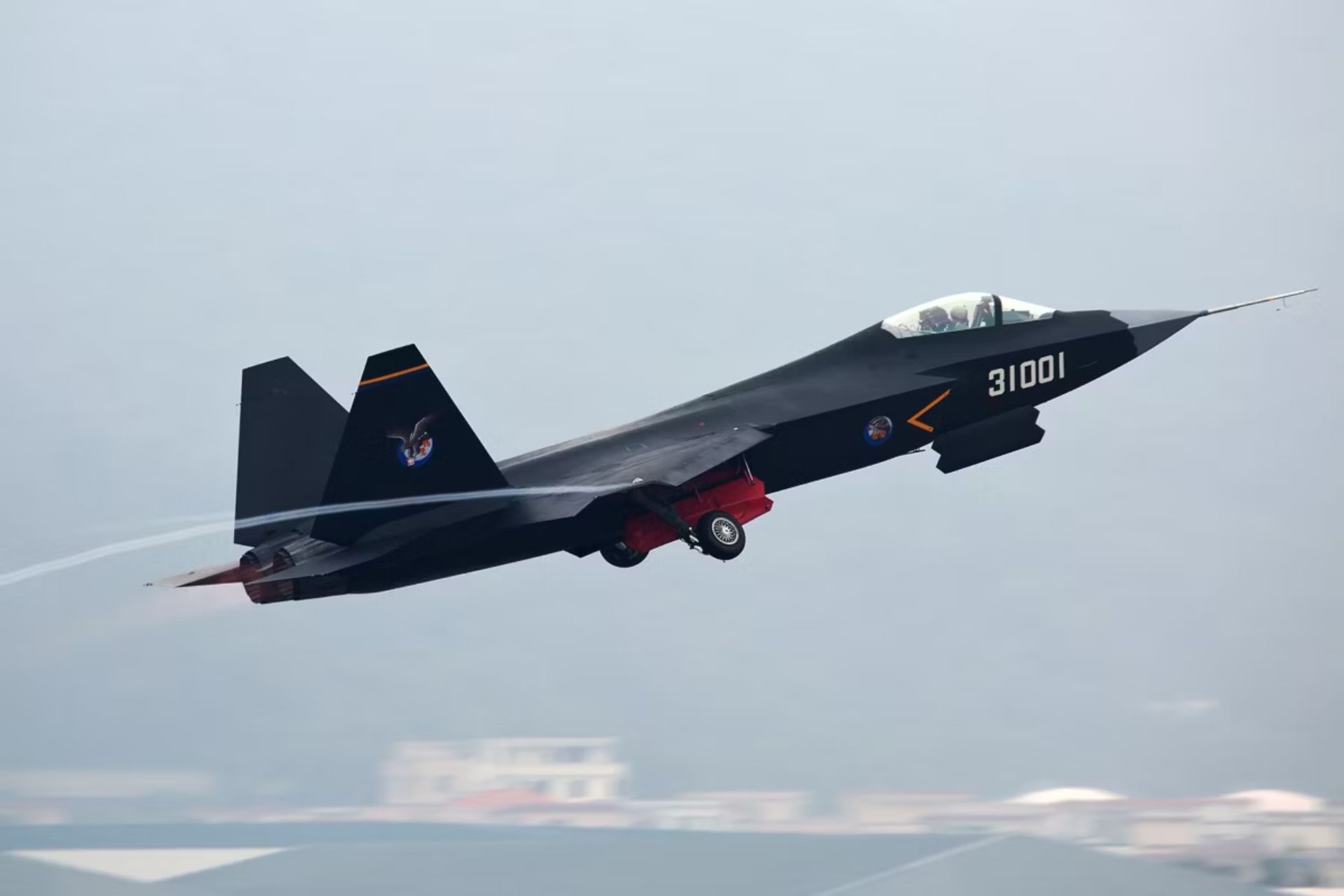
Chine FC-31 flying in 2023 (Picture source: Chinese PLA )
South Korea – KF-21 Boramae
The Boramae is a South Korean 4.5th-generation fighter jet that could compete with other aircraft like the French Rafale in the international market. The KF-21 Boramae had its first flight in 2022, partly due to its rapid development and planned high-volume production. The aircraft is designed and produced by South Koreans in partnership with Indonesians. The program aims for quick production with a modular design, meaning the jet will initially be a 4.5th-generation fighter with many foreign components. South Korea hopes to gradually indigenize production and evolve the platform into a true fifth-generation fighter by internally storing weapons and making other modifications later. The first test flight of the KF-21 occurred in 2022, with production expected to start in 2026, and South Korea plans to acquire 120 units by 2032.
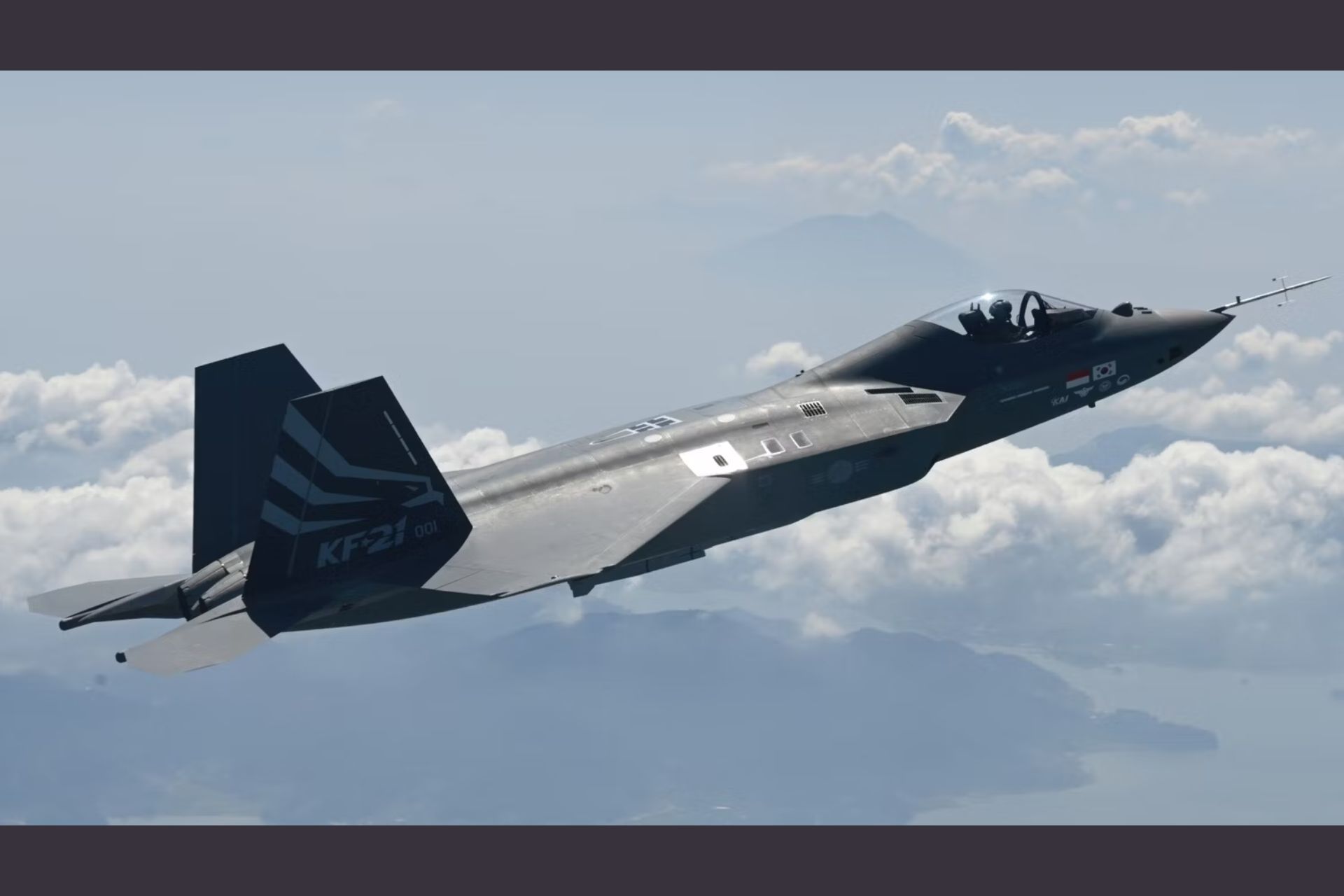
South korean KF-21 demonstrator (Picture source: South Korean MoD)
Russia – Sukhoi Su-75 Checkmate
Among all the aircraft on this list, the Su-75 is arguably the least likely to materialize. Russian marketing has tried to generate export enthusiasm for the Su-75 with great fanfare. However, the jet probably only exists as a concept, with only a mock-up displayed. As Russian combat aircraft exports have plummeted in recent years, it seems unlikely that Russia will secure the foreign orders and investments needed to develop this aircraft. The Su-75 appears to be aimed at exports, and it is questionable at best whether the Russian Air Force will invest in the project. The Russian invasion of Ukraine has further clouded the Su-75’s prospects, making it even less likely that countries will order it and that the Russian military will invest in weapons for today’s war rather than the distant future.
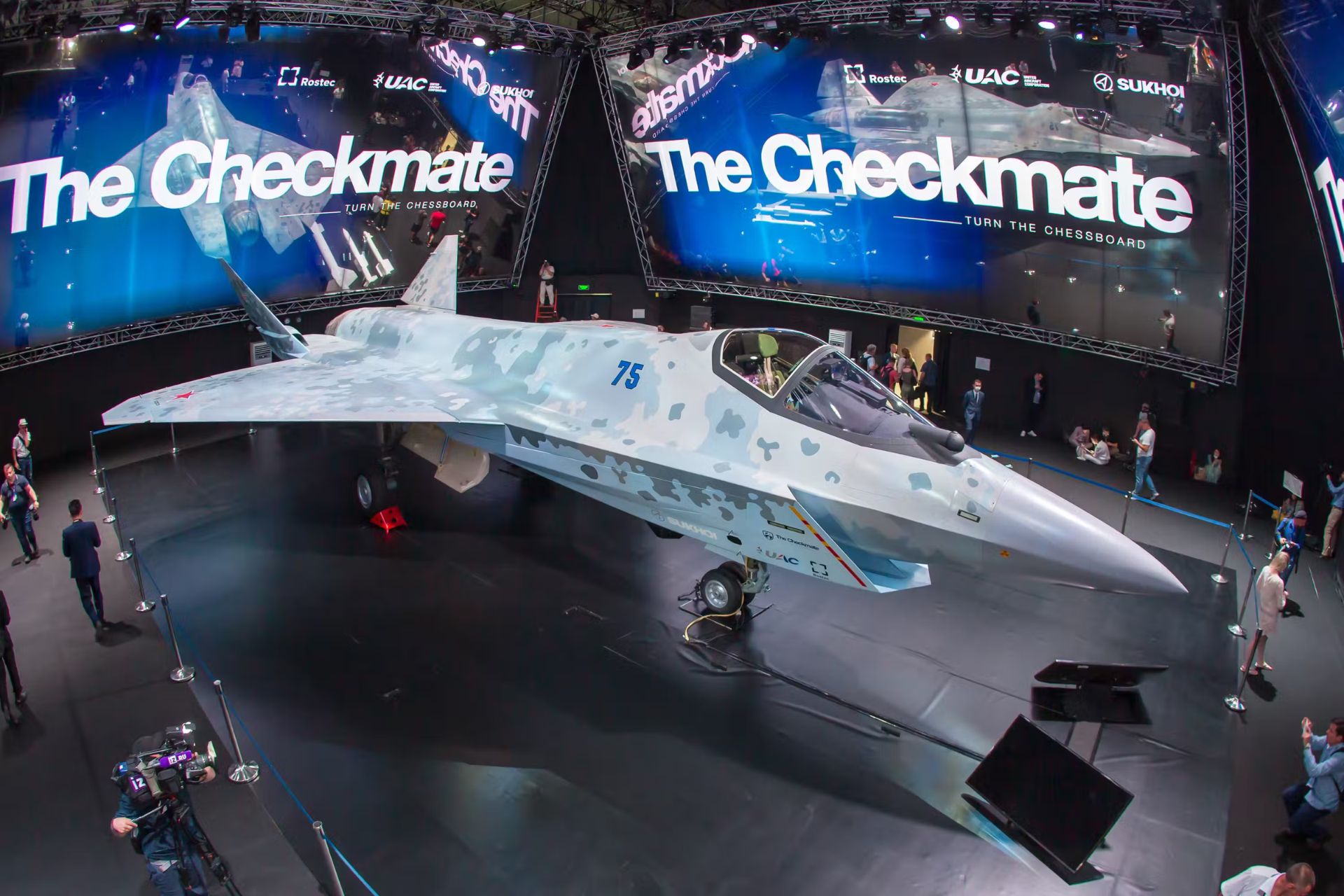
SU-75 checkmate model exposed as 5 Gen fighter dedicated to export (Picture source: ROStec )
Turkey – TAI KAAN
Like South Korea, Turkey is trying to disrupt the 4.5th/5th-generation fighter market by developing its own fighter (with export in mind). The TAI Kaan is a stealth air superiority fighter being built to replace Turkey’s F-16 Fighting Falcons, with its first flight in 2024. The project has gained urgency after the United States excluded Turkey from the F-35 program following its purchase of Russian S-400 air defense systems. The first prototype of the TAI Kaan was unveiled in 2023, and its maiden flight took place in February 2024. Like the Saab Gripen and the Korean Boramae, the Kaan features many components from Western countries. It is being developed in cooperation with British defense giant BAE Systems. The initial engine will be the General Electric F110 until the TAEC engine (a British Rolls-Royce/Turkish KALE engine) becomes available.
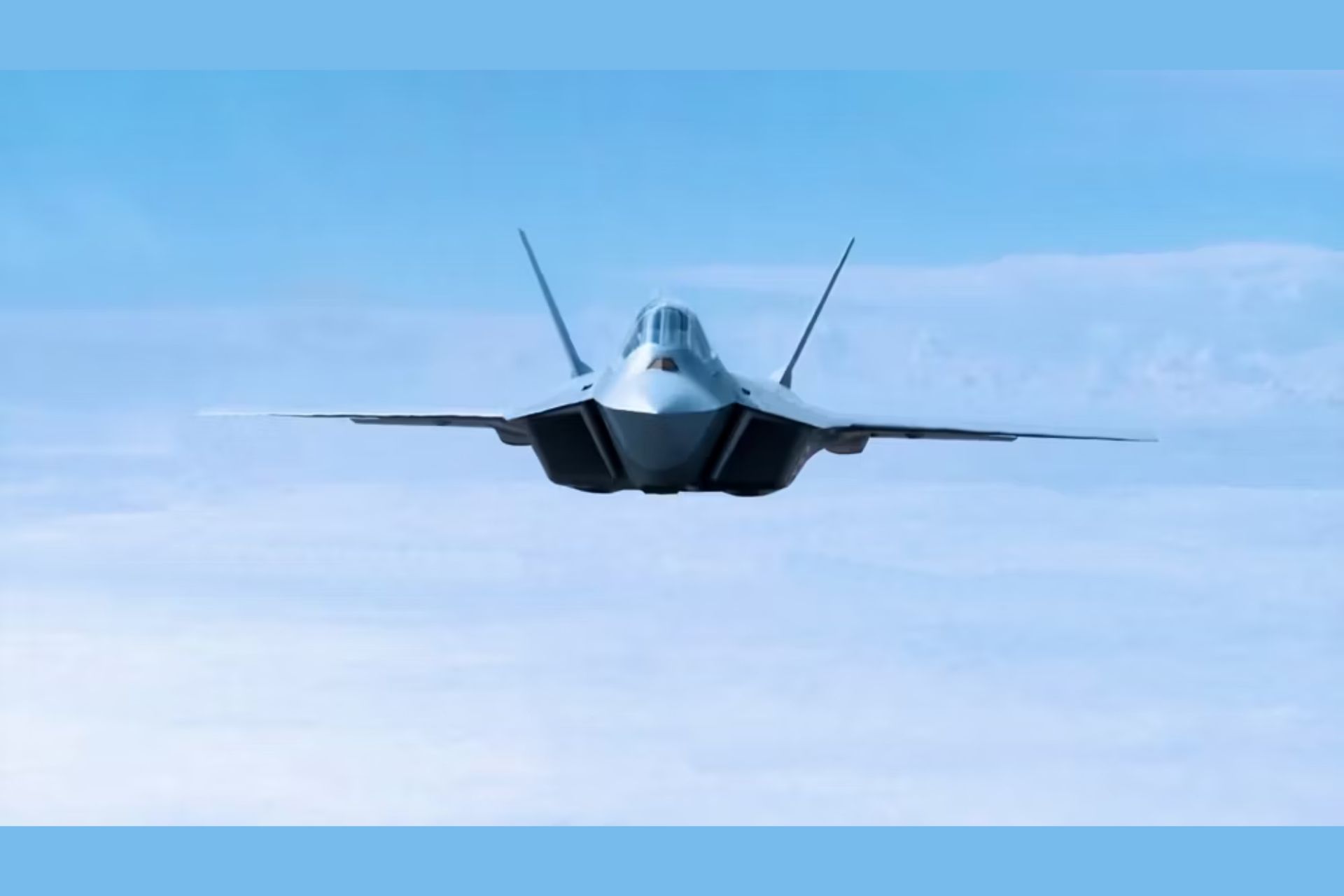
Turkish made KAAN, insipred from US F-22 (Picture source: TAI)
India – AMCA
Breaking away from the Russian Su-57 project, India decided to go it alone and develop its own fifth-generation fighter jet. The development of India’s AMCA fifth-generation fighter is expected to accelerate in 2024 after New Delhi approves the design and prototype. Metal cutting for prototypes is set to begin in 2024. The AMCA is a stealthy single-seat multirole aircraft under development for the Indian Air Force and Navy. The project gained importance for India after its withdrawal from the troubled Russian Su-57 fighter program in 2018. India claimed that the Russian fifth-generation fighter did not meet its requirements for stealth, sensors, radar, and combat avionics. According to Janes, the first AMCA prototype is expected to fly in 2028-2029
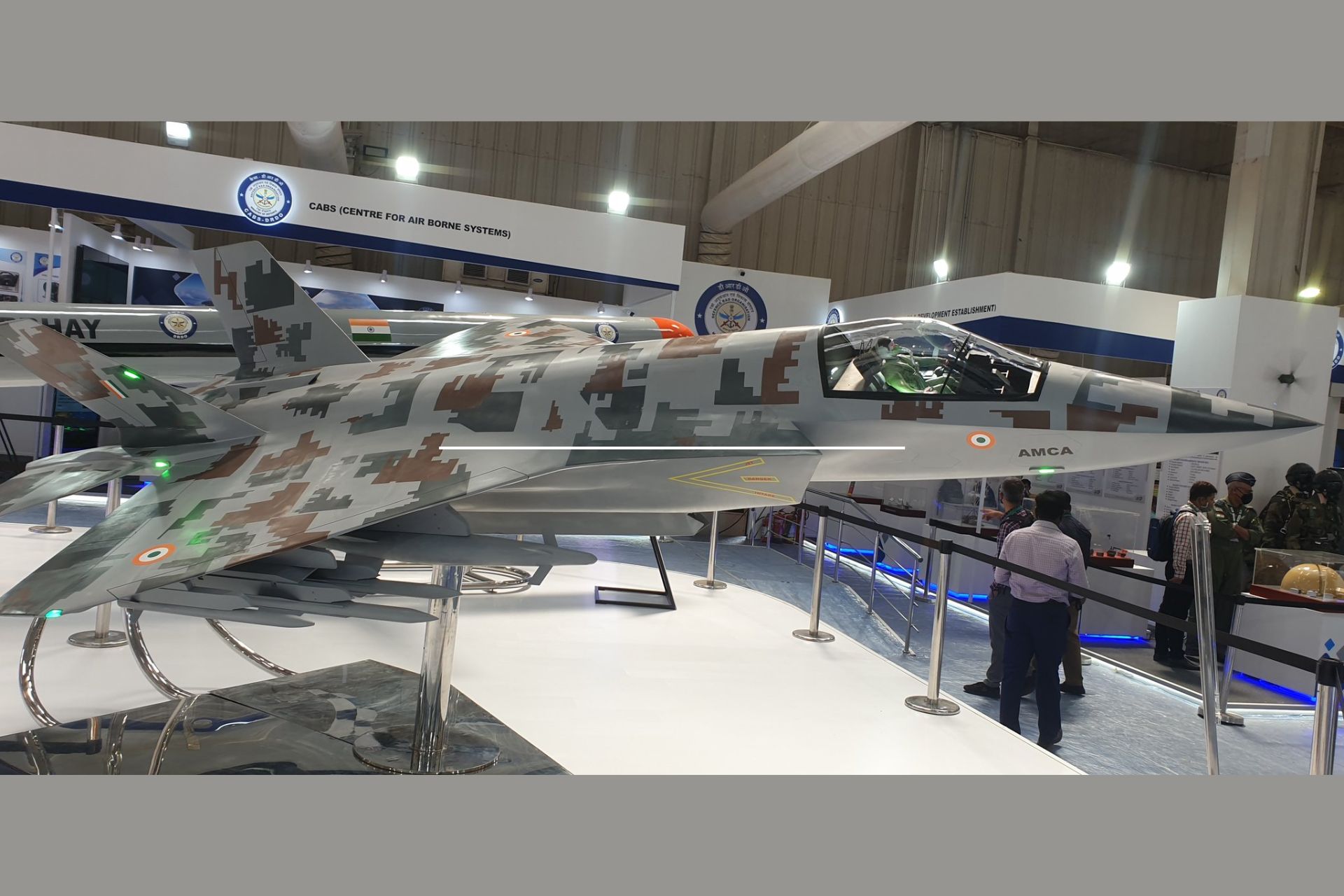
Indian AMCA-advanced median combat aircraft- presented in jaunaray 2023 (Picture source: X/@NewsIADN)
In conclusion, many countries are at an advanced stage of development, far ahead of the European SCAF project. Although little data is available on these aircraft, they represent serious emerging competitors to the American F-35 and F-22, which are currently benchmarks. Despite the lack of a precise definition of fifth-generation fighters, it is noted that a common feature is stealth, achieved through steep angles and linear structures.






